Japanese Food – 20 Japanese Dishes You Must Try Before You Die
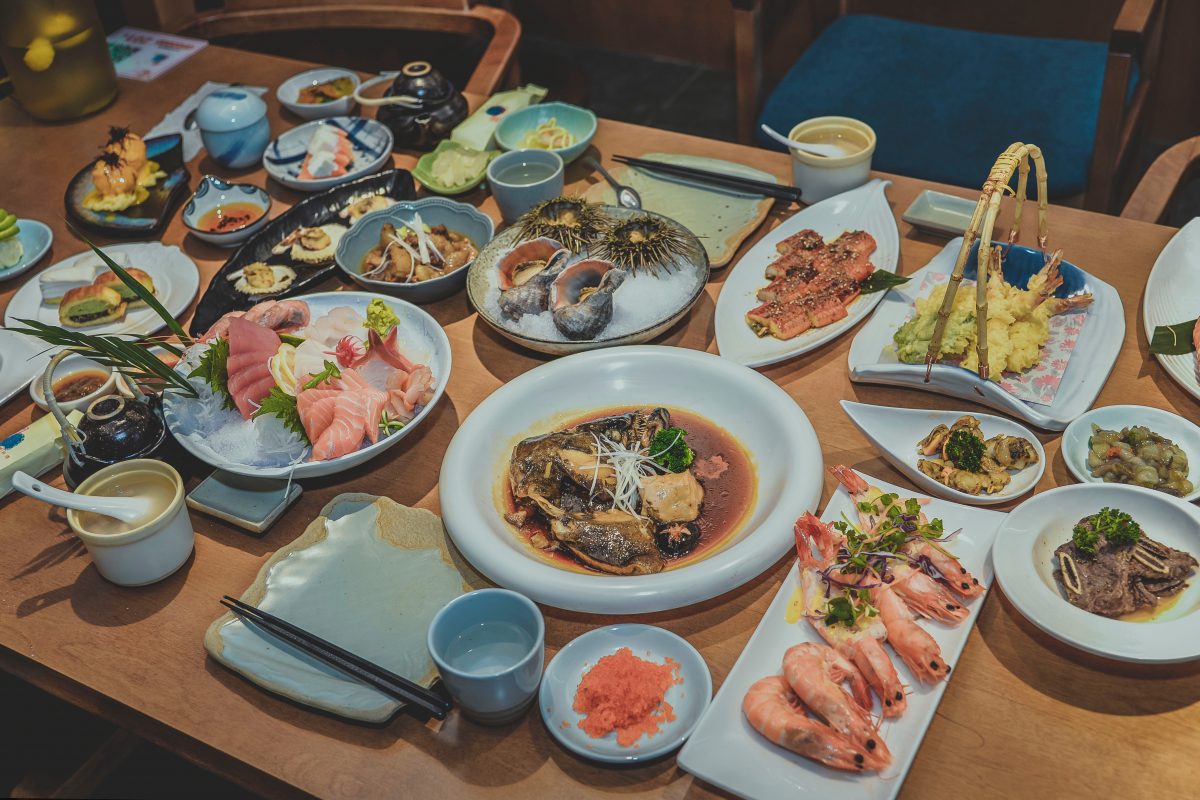
Japanese food is aesthetically pleasing, well-balanced and very healthy – no wonder it conquered the hearts (and taste buds!) of foodies all over the world. While some delicious fresh sushi is always a good idea, Japanese food is much more than that so why don’t you embark on a fascinating culinary journey fuelled by a lot of umami and try these traditional foods not to be missed when on a trip in Japan.
Sushi And Sashimi
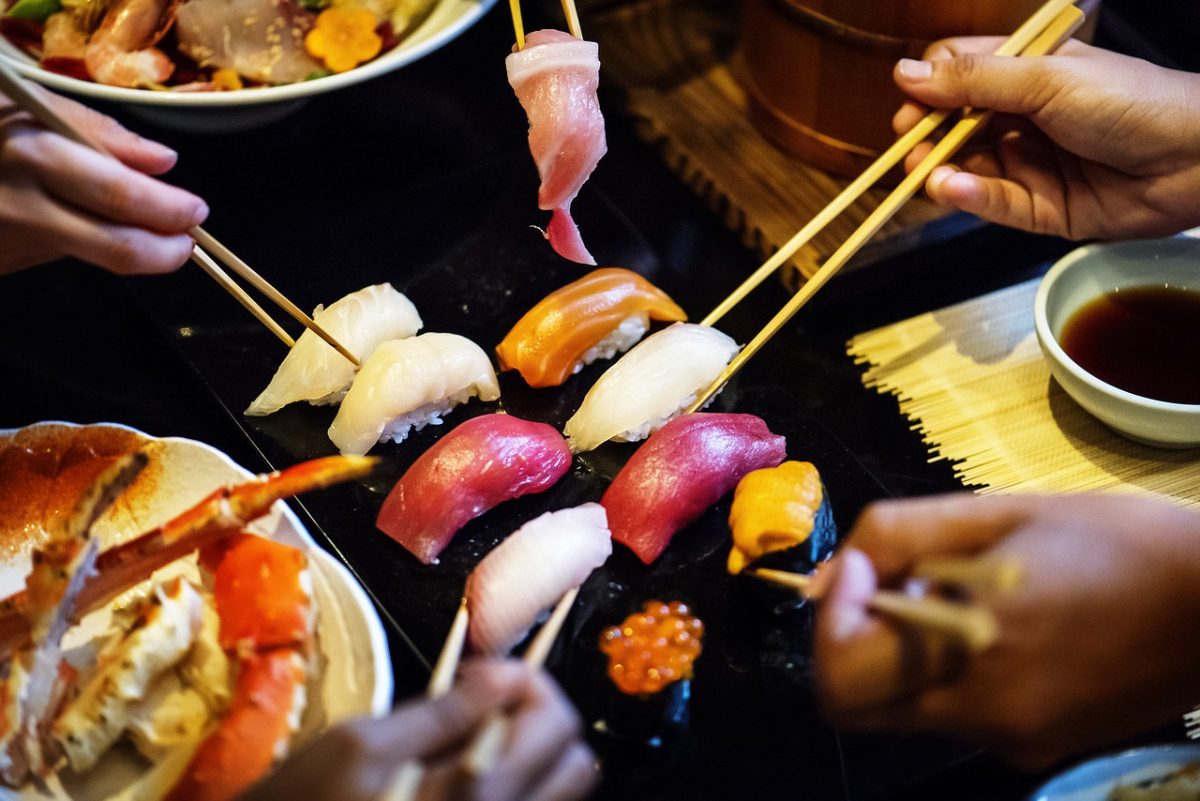
© Photo by rawpixel on Pixabay
Let’s be honest – a trip to Japan will never be complete without trying its internationally most recognised food. Although you may have had some sushi and sashimi in your life before, it often comes as a surprise to many visitors to discover how much simpler it gets in its country of origin.
Ingredients such as avocado and cream cheese are considered untraditional and they are hardly ever found in the local sushi bars. Still incredibly delicious, some of the most popular varieties of sushi and sashimi in Japan include chutoro (medium-fatty tuna), otoro (very fatty tuna), salmon, ikura (salmon roe), amaebi (sweet shrimp) and ika (squid).
As both sushi and sashimi use raw fish as their base ingredient, they can sometimes be confused but they are actually not the same. Sushi has sumeshi (vinegared rice) formed either into a small ball with the fish placed on top or into a roll with the fish inside. Sashimi, on the other hand, consists solely of finely sliced pieces of fish.
If you’re a big sushi lover, don’t miss the famous Tsukiji fish market in Tokyo where you can witness a tuna auction and check where Japanese sushi masters get their supplies.
Udon
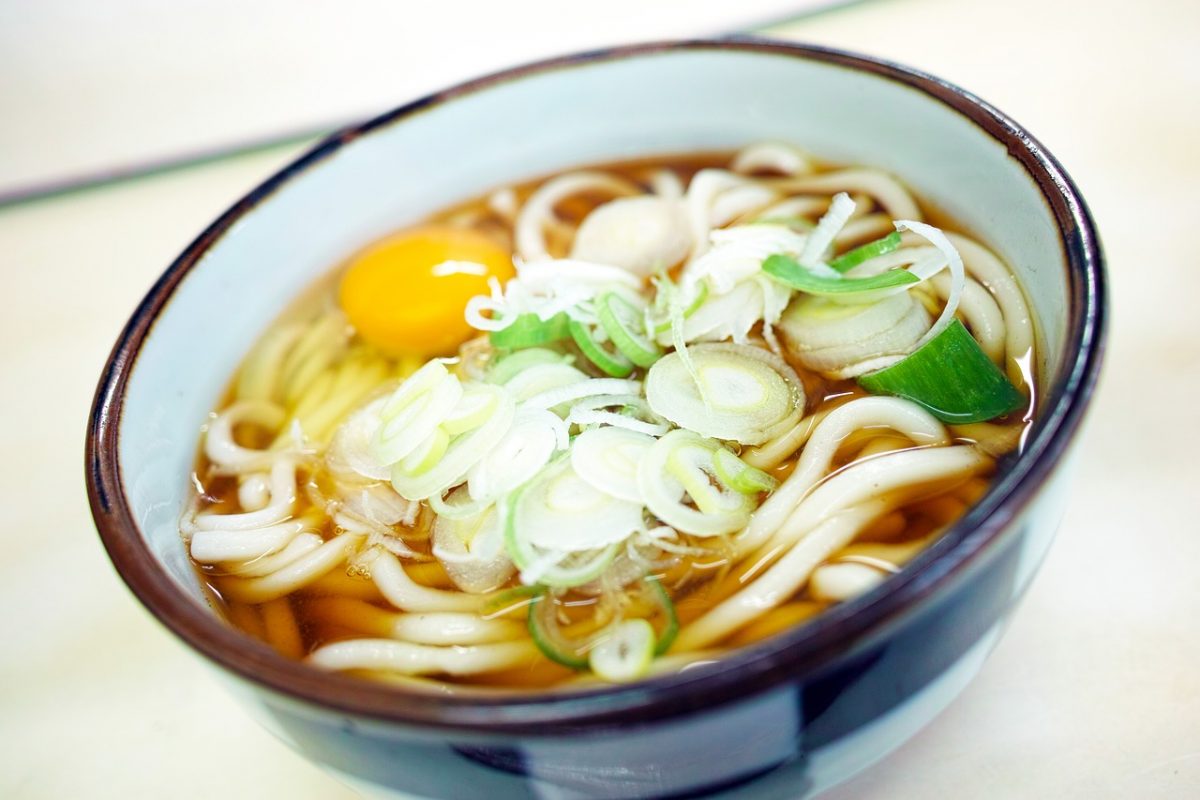
© Photo by takedahrs on Pixabay
What is it? Wheat Flour Noodles
These thick, a little bit chewy noodles are normally served with kakejiru broth as a hot soup called kake udon. The secret to a delicious kake udon is a right mix of dashi (Japanese soup stock), soy sauce and mirin (rice wine-based Japanese essential condiment). It truly makes this dish one of the greatest comfort foods Japan has to offer.
The best region to indulge in udon’s simple yet perfectly balanced taste is the South of Japan, especially on the Shikoku island. This place is the home of the wheat flour noodle. There are around 800 udon restaurants in the Kagawa Prefecture alone!
Tempura
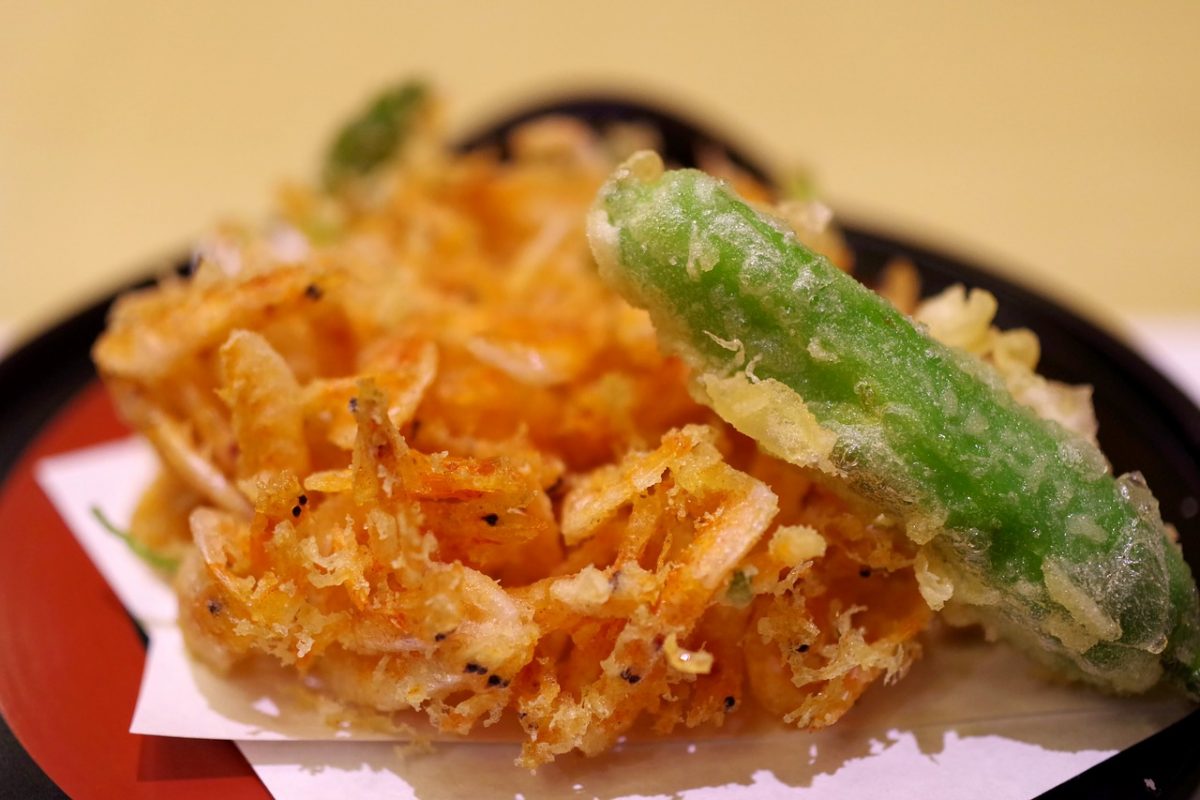
© Photo by takedahrs on Pixabay
What is it? Battered and Deep-fried Seafood and Vegetables
Did you know that this popular Japanese food was originally brought to the Land of the Rising Sun by the Portuguese Jesuit missionaries in the 16th century? And no wonder it stayed for good – its crispiness and delicacy may be addictive!
The tempura batter is prepared with wheat flour, water, and eggs. Slices of veggies and seafood are then dipped in it and deep-fried in vegetable oil. Once ready they are served with tentsuyu (special tempura dip) and grated daikon radish.
Yakitori
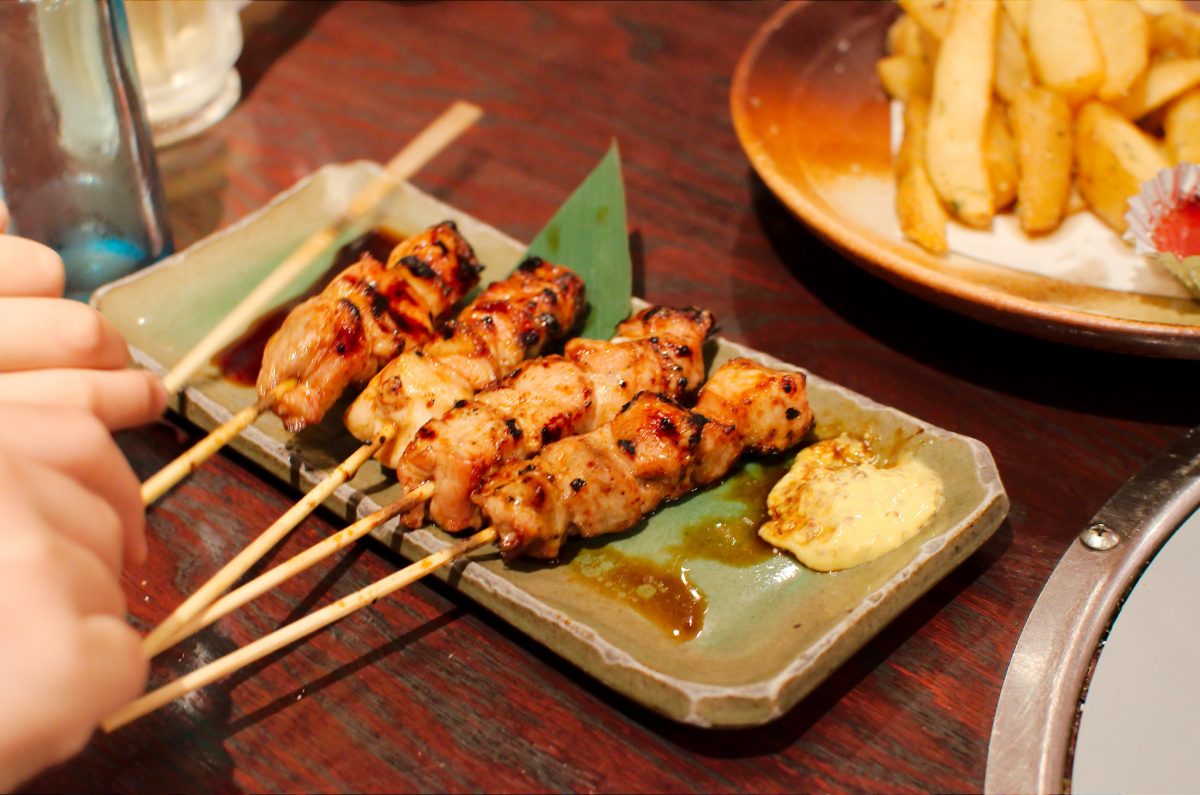
© Photo by Michael Mrugalski on Flickr
What is it? Grilled Chicken on Skewers
It may seem that Japanese cuisine is all about fish and seafood. But if you’re craving some meat, fear not – there is yakitori! This Japanese fast food consists of different chicken parts placed on skewers, grilled over charcoal and seasoned with a sweet-and-salty sauce. It’s a perfect snack to order in an izakaya (Japanese style pub/casual eatery).
Ramen
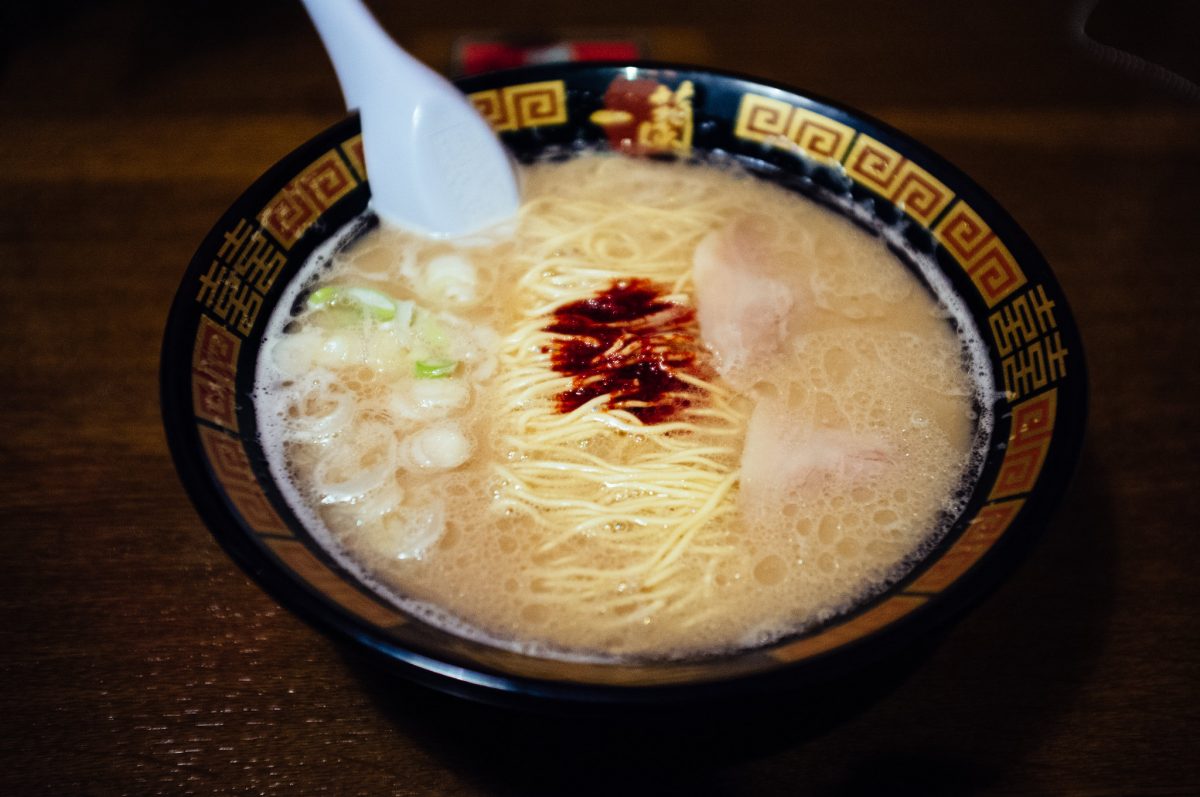
© Photo by Fabian Reus on Flickr
What is it? Noodles Soup
In spite of its Chinese origin, ramen is one of the most popular dishes in Japan. And the locals are clearly very proud of it (they even opened a ramen museum in Yokohama!). The regional varieties abound and the toppings may differ although they most commonly include fresh vegetables, mushrooms, boiled eggs, and sliced pork. Nevertheless, the most essential ingredient is the noodles – also made with wheat flour but unlike the udon, they are thinner and longer.
Oden
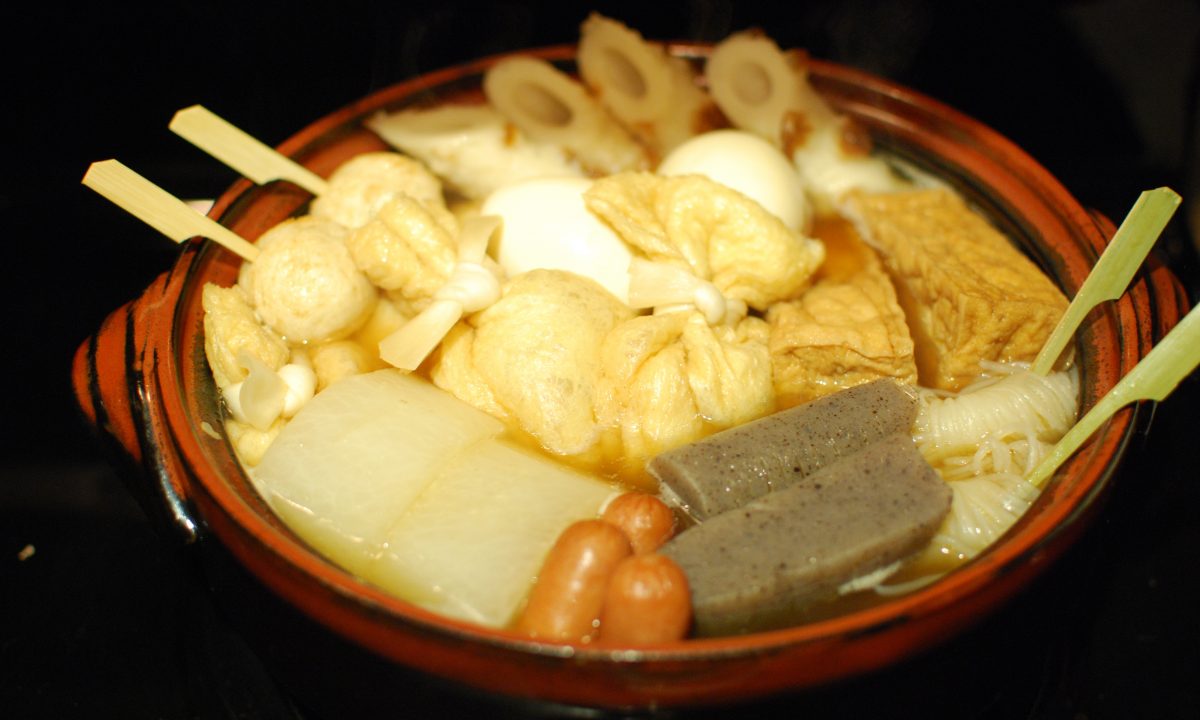
© Photo by nicolegeri1213 on Flickr
What is it? One-Pot Soup
Oden is a one-pot dish popular in the Japanese wintertime. Just like other Japanese soups, the base for oden is the dashi-seasoned broth. Other ingredients that you will find in the soup vary but almost always include hard-boiled eggs, tofu, daikon radish, konjac (an Asian plant which corms are edible) and fishcakes. Although a bit inconspicuous of a dish, oden is super tasty and filling.
What’s more, it’s often sold in street food stalls! It’s also available in many convenience stores so finding it won’t be a problem!
Tamagoyaki
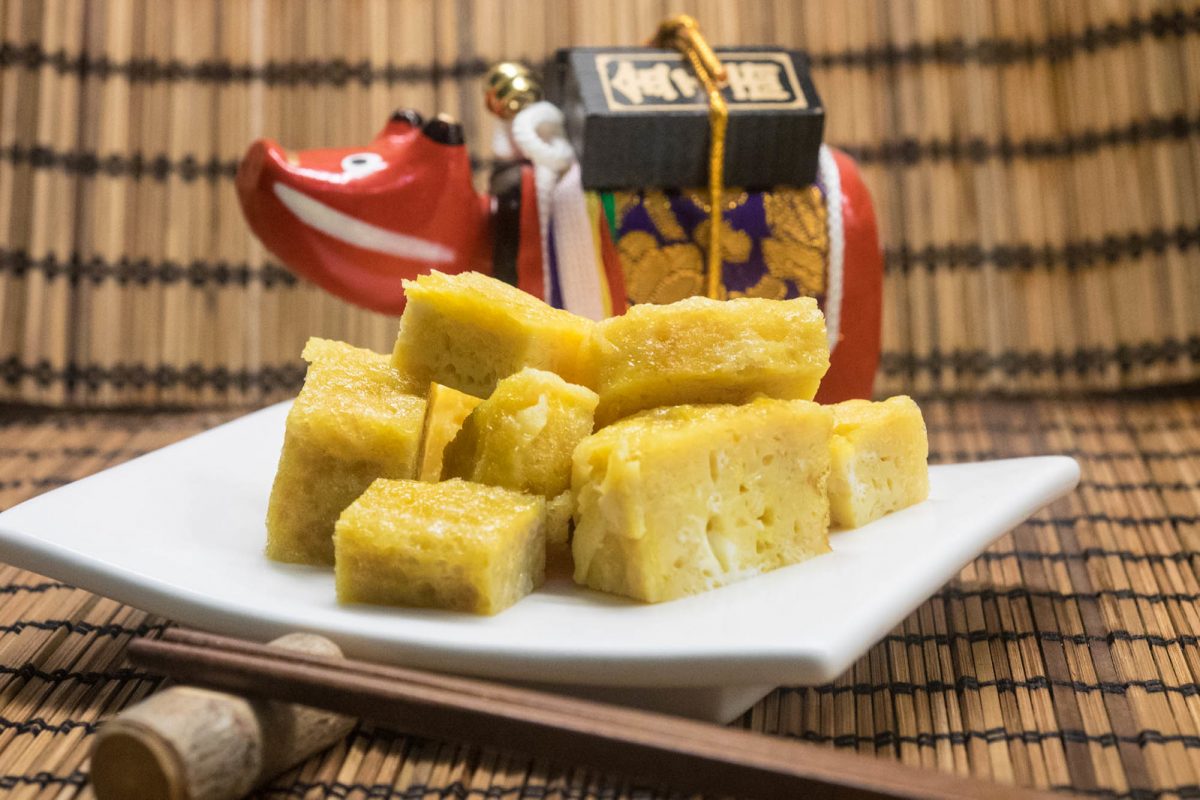
© Photo by Laura Tomàs Avellana on Flickr
What is it? Japanese Rolled Omelette
Tamagoyaki literally means ‘fried eggs’ in Japanese but don’t get fooled, this Japanese dish is actually way more special that you may expect – it is smooth and super fluffy and it doesn’t resemble a traditional omelette.
To prepare a real tamagoyaki you actually need a special square-shaped pan. The egg mixture is then rolled and cut into smaller pieces. Japanese normally have them for breakfast, placed in a bento (Japanese lunch box meal) or on top of nigiri sushi.
Like many other Japanese foods, tamagoyaki also comes in different varieties. Therefore, be sure that you try both the sweet and the savoury version of this awesome rolled omelette!
Tonkatsu
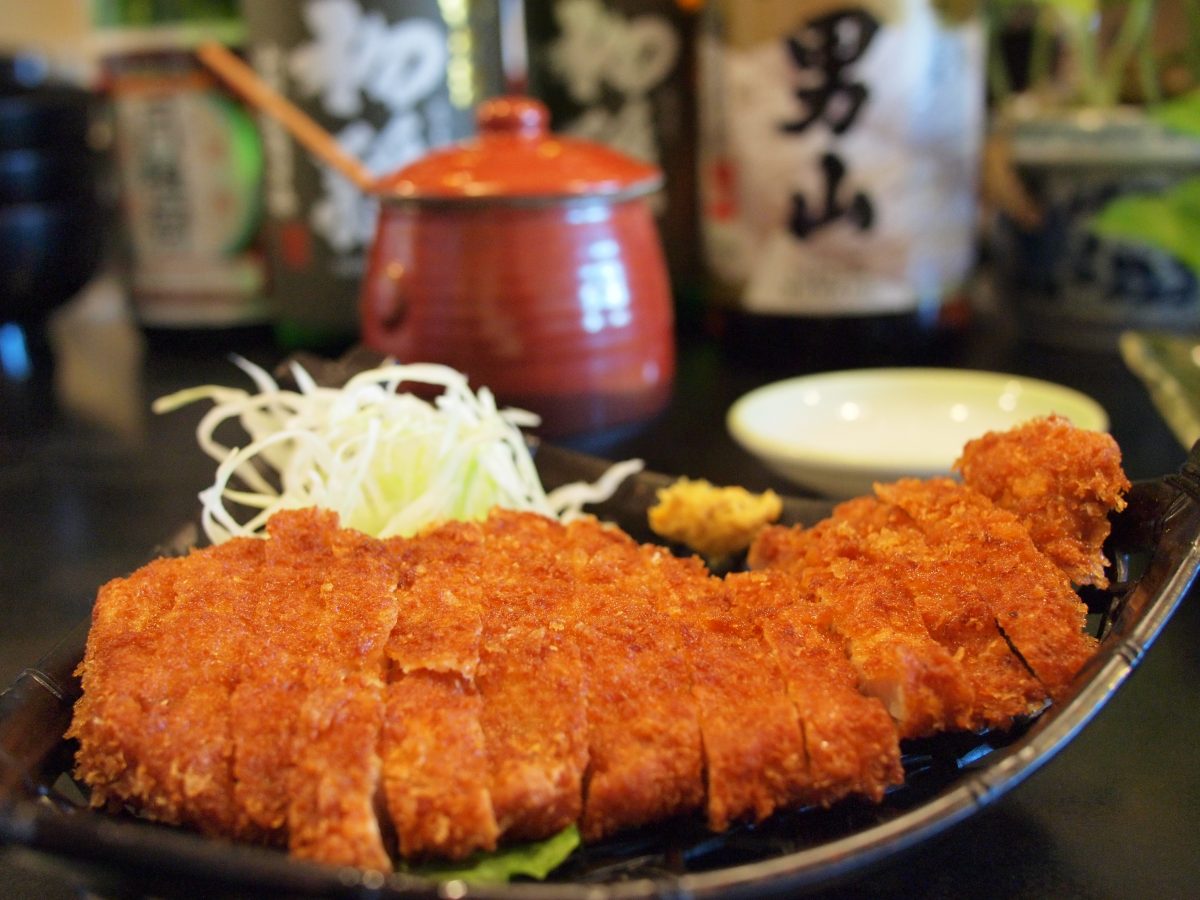
© Photo by anndouille on Flickr
What is it? Deep-Fried Pork Cutlet
Another obligatory Japanese dish for the meat lovers! Tonkatsu is a breaded, deep-fried piece of pork accompanied with rice, cabbage salad and a special, slightly sweet and fruity tonkatsu sauce. It is one of the most popular lunch choices in Japan and can even be found in any convenience store. As an alternative, another quite common way to eat tonkatsu is to sandwich it in soft Japanese bread.
Takoyaki
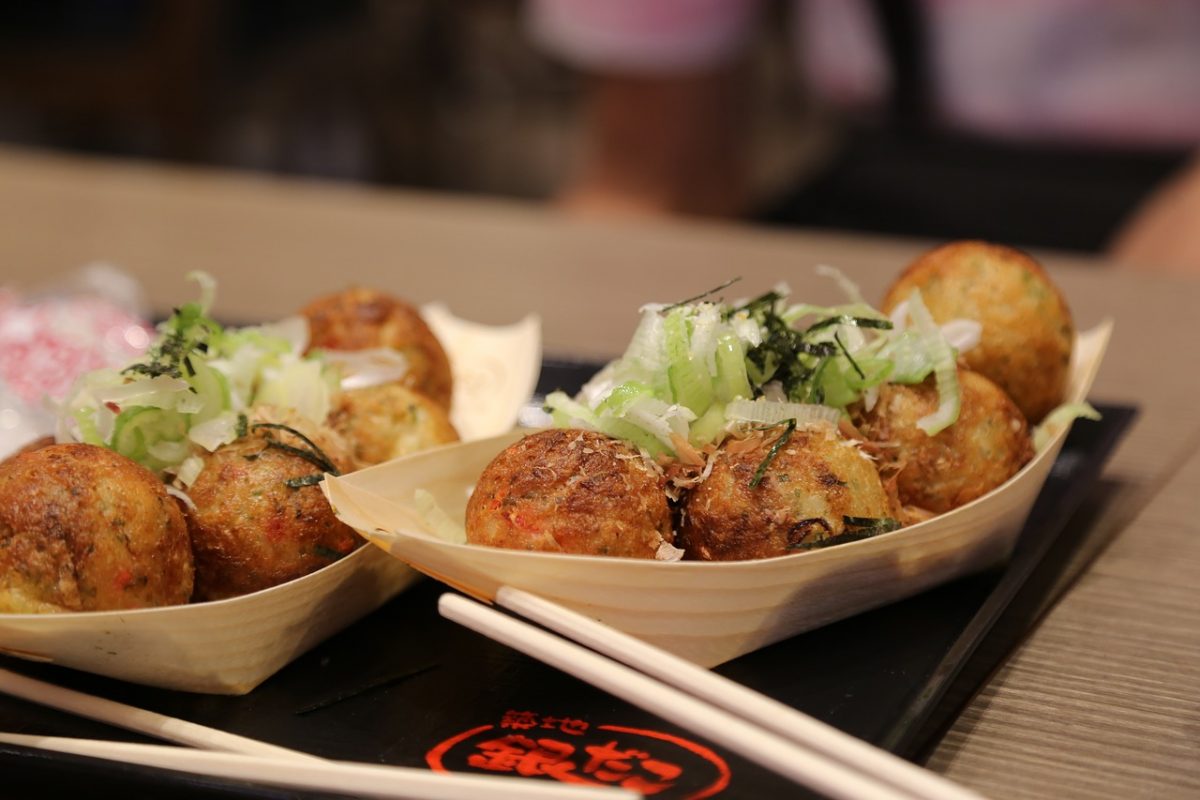
© Photo by Nick Yeh on Pixabay
What is it? Octopus Balls
Want to try some Japanese street food? Go for takoyaki! It is a very popular Japanese appetiser of diced octopus battered, formed into small balls and cooked or fried in a specially moulded pan. It comes with a Worchestershire-like sauce and a topping of dried bonito fish.
The home of takoyaki is Osaka, where you can pop in for some snacks in the Aizuya takoyaki shop that has been up and running for over seventy years!
Okonomiyaki
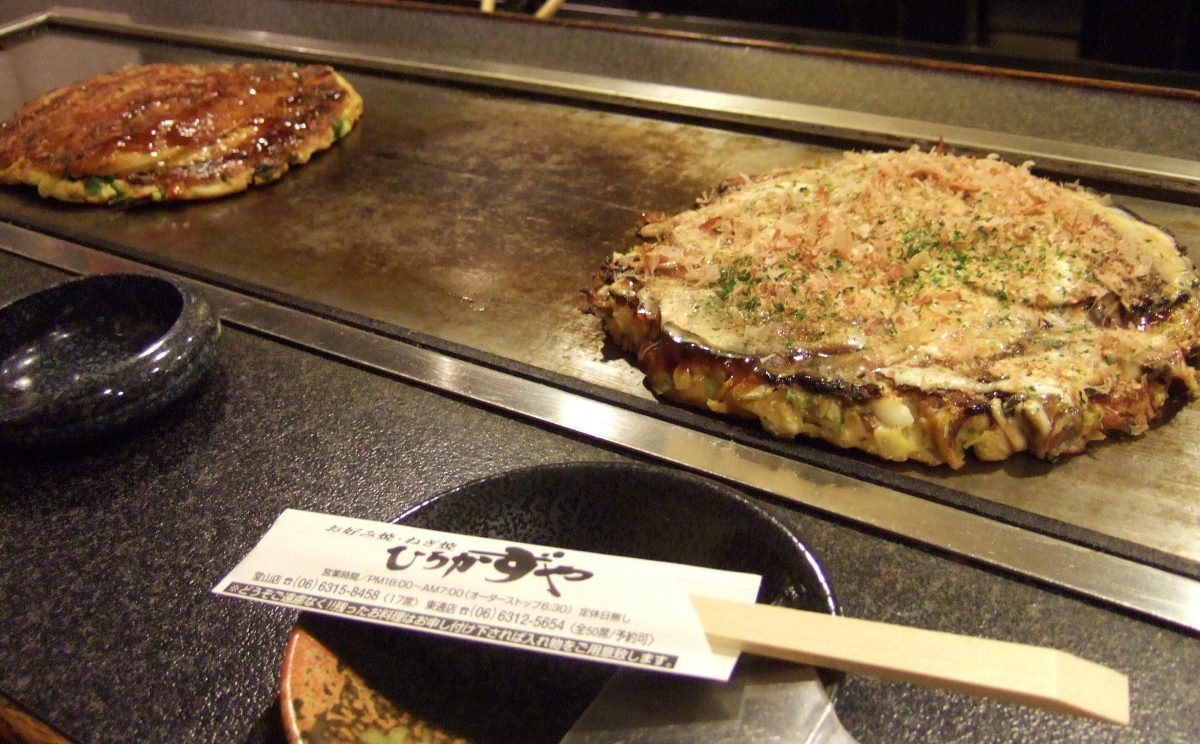
© Photo by Henry Burrows on Flickr
What is it? Japanese Savoury Pancake
If you have already tried the Japanese omelette (tamagoyaki), it’s time to go for some Japanese pancakes! Okonomiyaki will satisfy even the pickiest travellers – okonomi in Japanese translates to “what you like” or “how you like” and this dish is available in so many varieties that you can be sure to find one that will please your taste buds.
The pancake mix consists of flour, eggs, water, shredded cabbage and nagaimo (Chinese yam). Other ingredients are added depending on the customer’s preferences. These ingredients ranges from vegetables through cheese to different kinds of meat. You can even have your okonomiyaki with fried noodles on top – sounds tempting, doesn’t it?
Kobe Beef
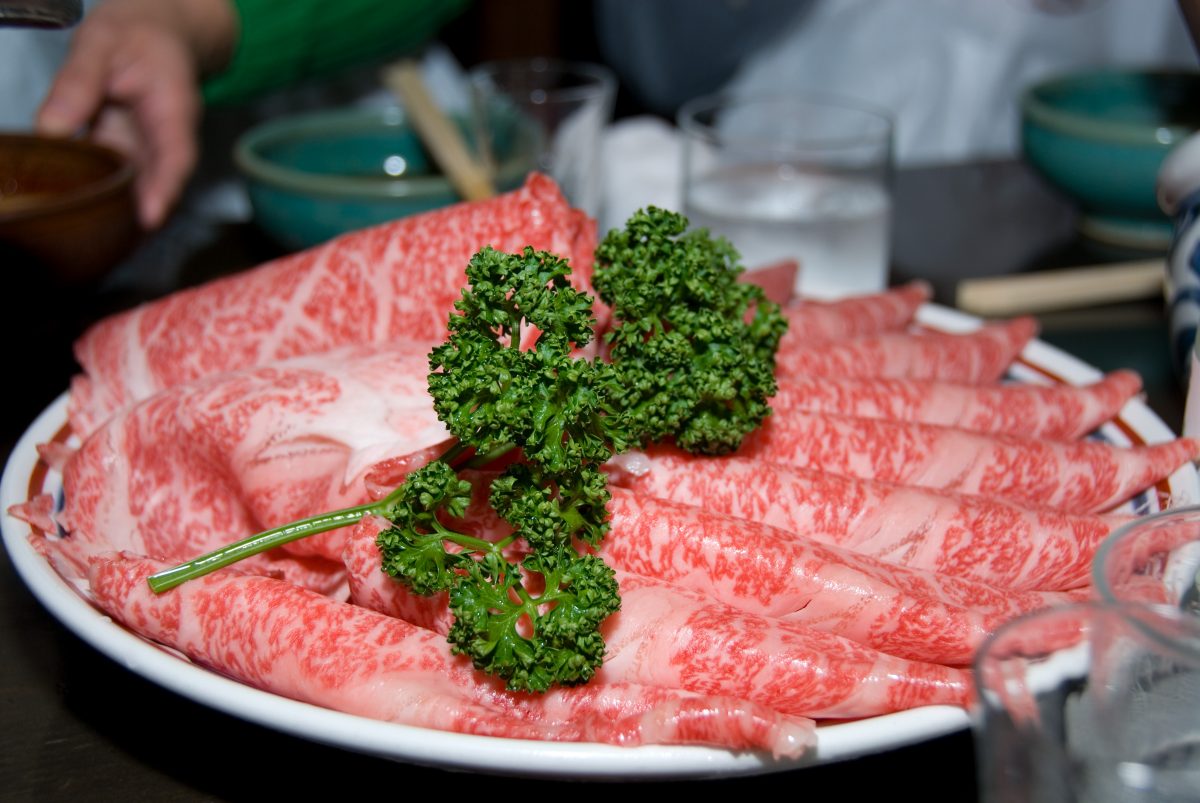
© Photo by Sergiy Zhuk on Flickr
You may have heard of Japan’s crazy expensive beef, the Kobe beef. Paying at times even more than 500 USD per kilogram does indeed sound like a lot! But the connoisseurs assure that trying some Kobe beef is definitely a priceless, once-in-a-lifetime experience.
The meat is tender and delicate and it has a characteristic marble-like texture formed by the spidery veins of fat. To get such unique beef, the Japanese farmers apply some very particular production methods such as breeding the cattle on beer, massaging the cows and playing classical music to make sure they feel comfortable and relaxed.
Fugu
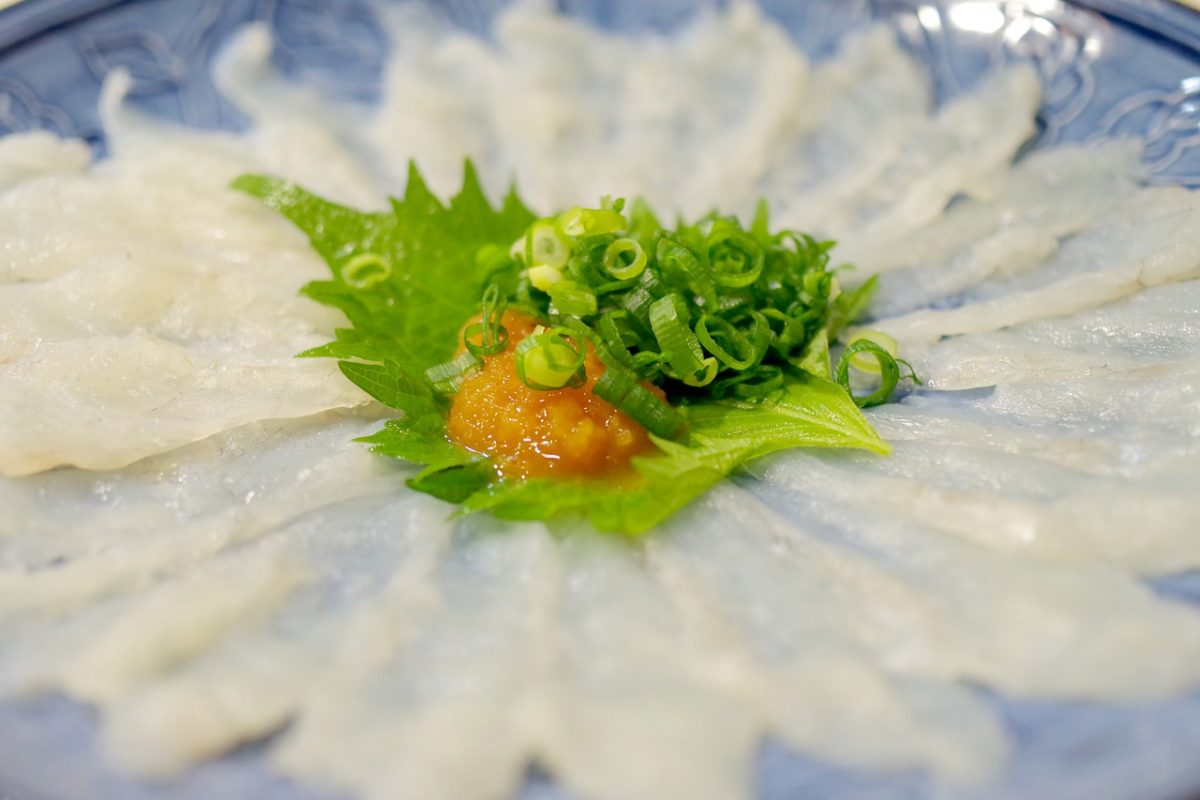
© Photo by takedahrs on Pixabay
What is it? Pufferfish
Fugu is probably one of the most controversial Japanese food – the toxic substances in the fish’s intestines, liver, and ovaries are considered as poisonous as cyanide and may cause respiratory paralysis.
So what does it take for a chef to serve this potentially lethal dish and make sure it is actually safe to eat? Years of experience and rigorous training in accordance with strict state laws are a must.
Having this safety and quality guarantee, the Japanese will not deny themselves the pleasure of tasting fugu’s delicacy. The numbness sensation you experience in your tongue while eating the fish supposedly accounts for an unforgettable taste experience.
Sake
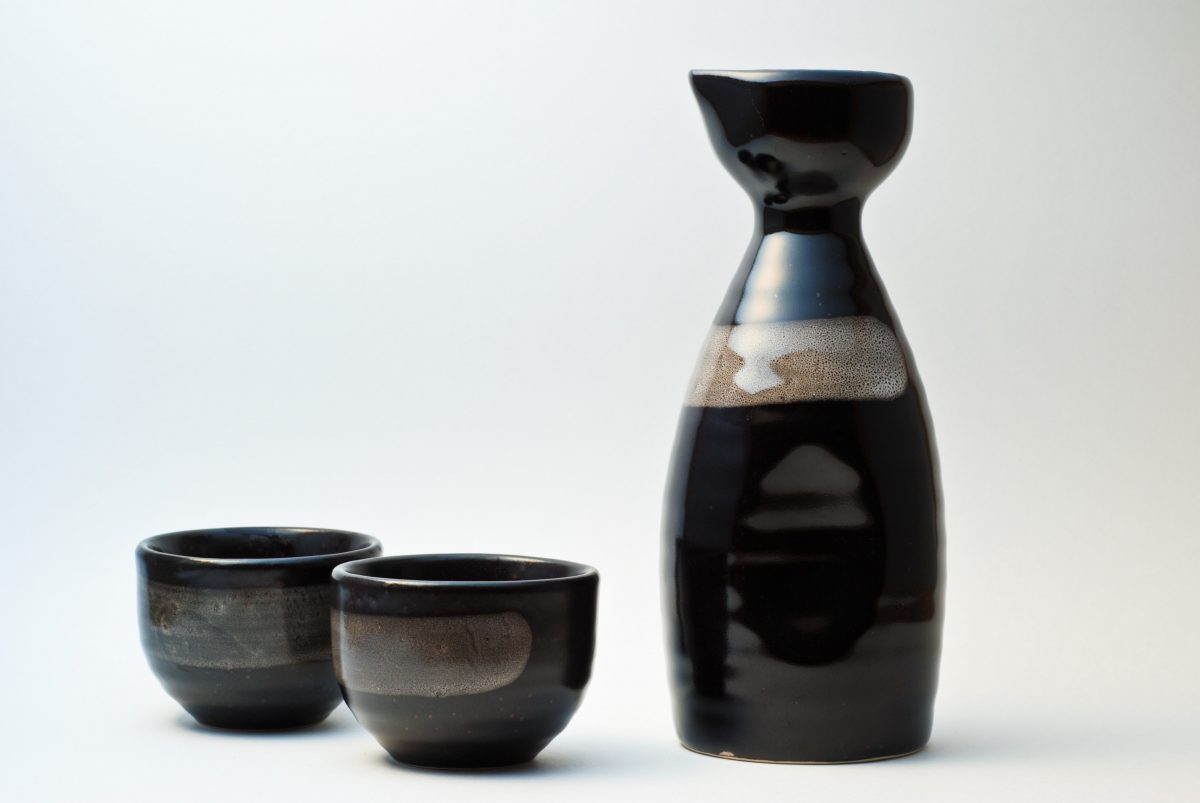
© Photo by Cleber Mori on Flickr
What is it? Japanese Rice Wine
Sake (in Japan referred to as nihonshu) is the national alcoholic beverage of Japan, produced by fermenting rice. Its alcohol percentage content is similar to that of wine. Therefore, it is often called “the rice wine”.
Serving sake traditionally involves a special ceremony. The beverage is warmed in a porcelain bottle and poured to sakazuki – small cups made of the same material. Remember that the right way to drink sake is to sip it.
Matcha
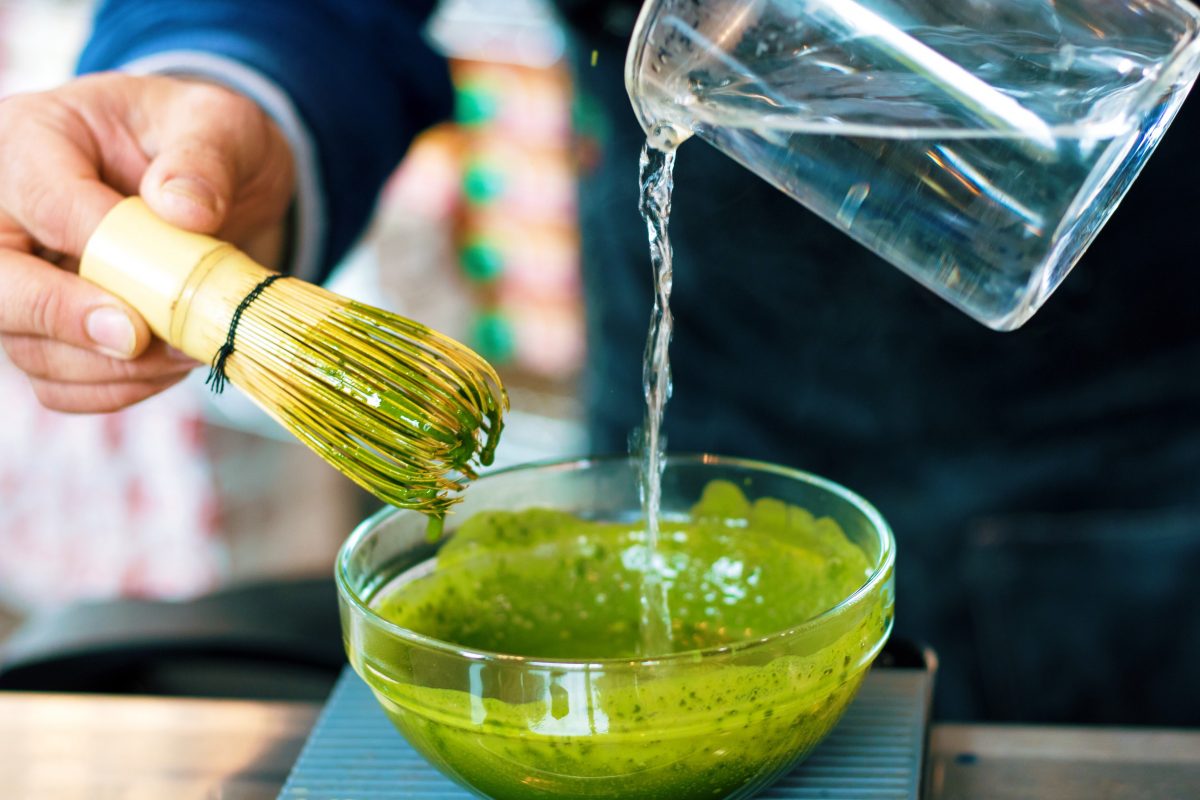
© Photo by Jason Leung on Unsplash
What is it? Japanese Powdered Green Tea
The world has gone crazy about matcha! Matcha lattes, matcha ice cream, and even matcha-flavoured chocolates are now widely available almost anywhere you go.
However, if you are travelling to Japan, you shouldn’t miss the traditional Japanese tea ceremony. During which, matcha tea is prepared with the use of special whisk (chasen), bowl (chawan) and spoon (chashaku). The ritual has a meditative side to it so it’s also a perfect opportunity to learn more about the Japanese culture!
Miso
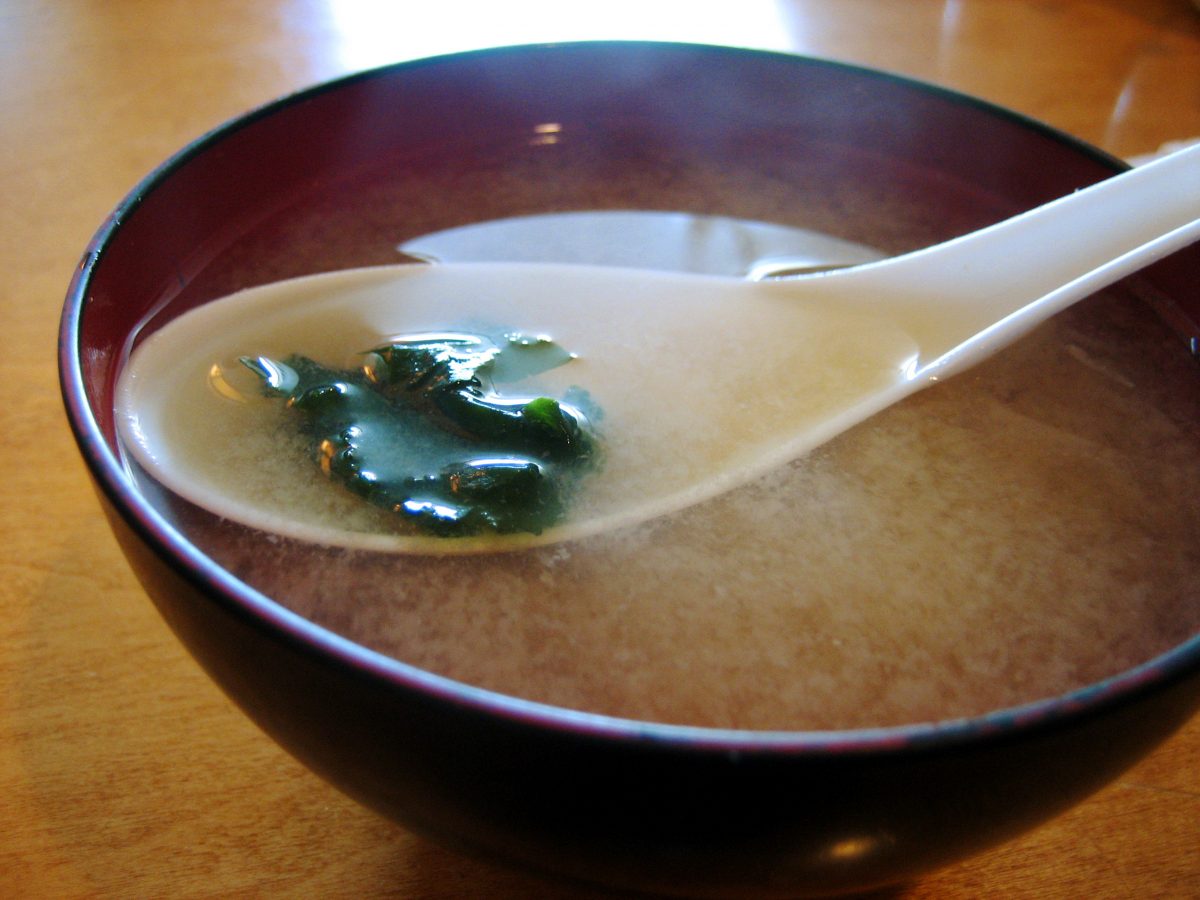
© Photo by Robyn Lee on Flickr
What is it? Fermented Soybeans
Miso is most commonly found in miso soups. Miso soup is made with base ingredients of dashi broth and miso paste made from fermented soybeans. Different toppings such as wakame seaweed, tofu, and spring onions are then added to the soup.
Although aromatic and delicious, it is a rather humble soup in comparison to other Japanese dishes. It is its simplicity though that makes it a perfect food to have at any time of the day. In fact, Japanese do eat miso for breakfast, for lunch, and for dinner as an accompaniment to other local dishes.
Dango
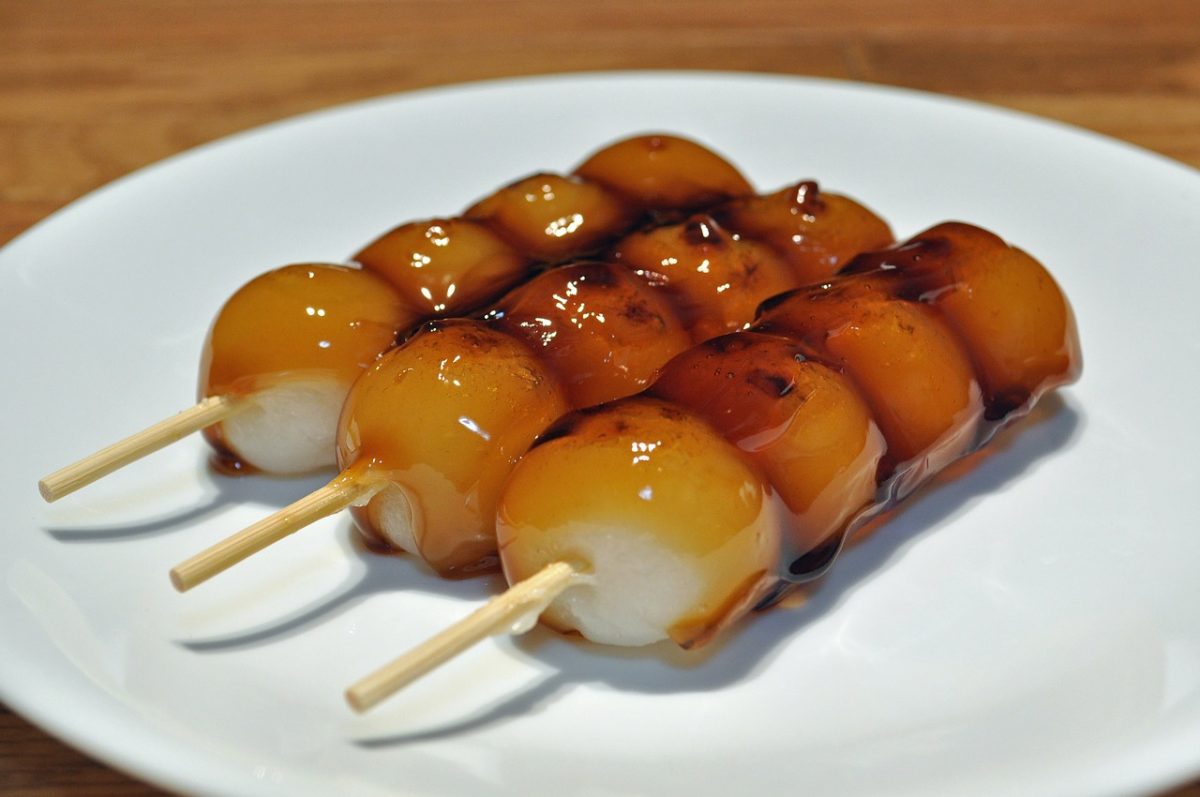
© Photo by David Mark on Pixabay
What is it? Sweet Japanese Dumplings
Dango is sweet rice flour formed into a ball shape. Three to five dango balls are then normally put on a skewer, served with a layer of sugar syrup. Dango is often accompanied by green tea. It’s a great option for a delicious Japanese dessert to go and it’s widely available all year round!
Taiyaki
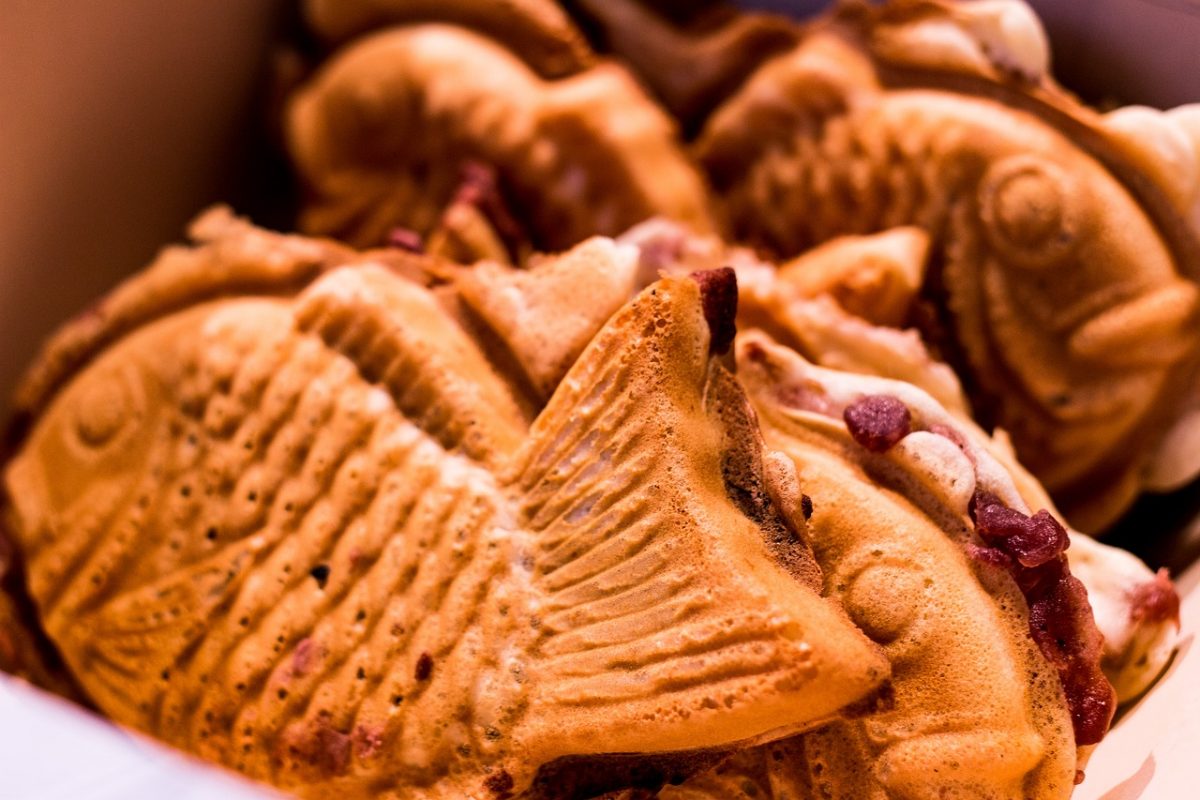
© Photo by K_KAZUHIKO on Pixabay
What is it? Fish-shaped Cake
You may have already seen some pictures of yummy-looking fish-shaped waffles scrolling through your Instagram – those are taiyakis! These Japanese cakes made from pancake or waffle mixture are filled with red bean paste, cheese, chocolate, cream or sweet potatoes and served hot.
Fun fact: “tai” actually means sea bream fish in Japanese. Many believe that it brings good luck – yet another reason to treat yourself to this Japanese speciality!
Donburi
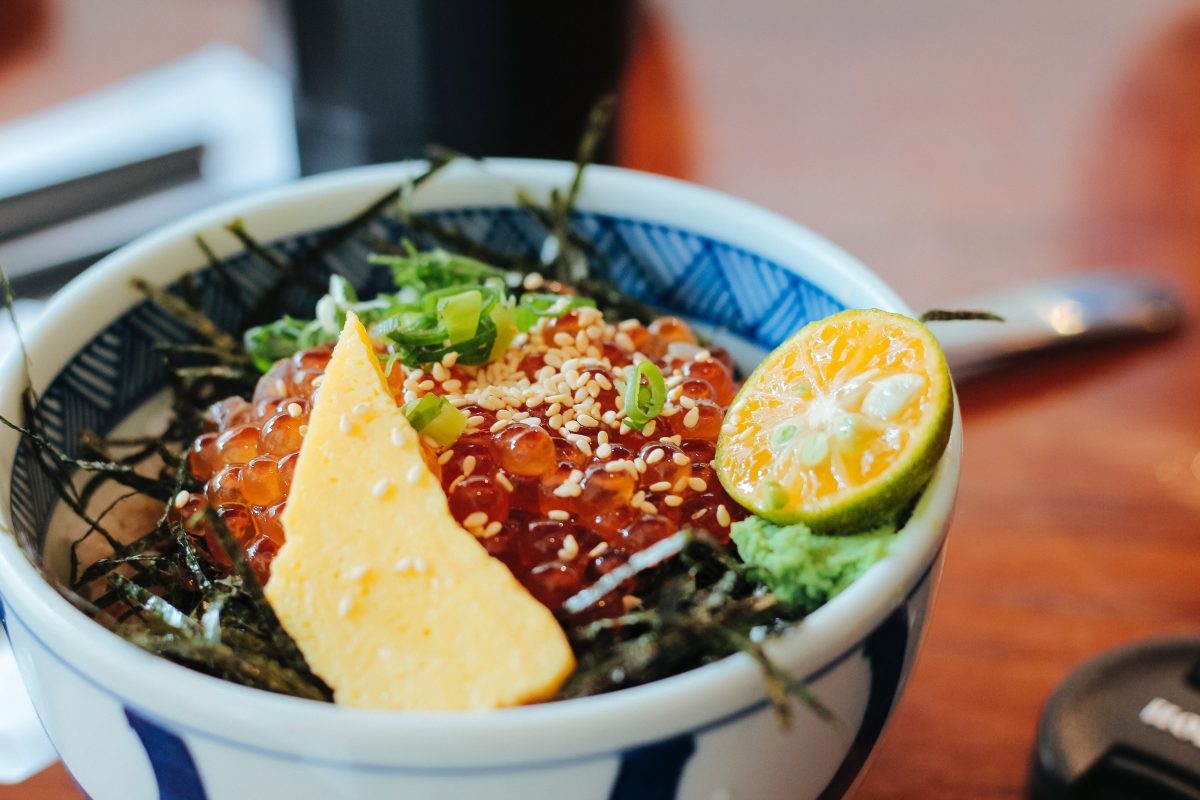
© Photo by Should Wang on Unsplash
What is it? Rice Bowl Dish
Donburi literally means “bowl” in Japanese. If you order one, expect to get it filled with steamed rice covered with a mixture of fish or meat and vegetables simmered together. It’s usually served with soy sauce, although just like in the case of other Japanese dishes, the seasonings differ depending on the region.
Mochi
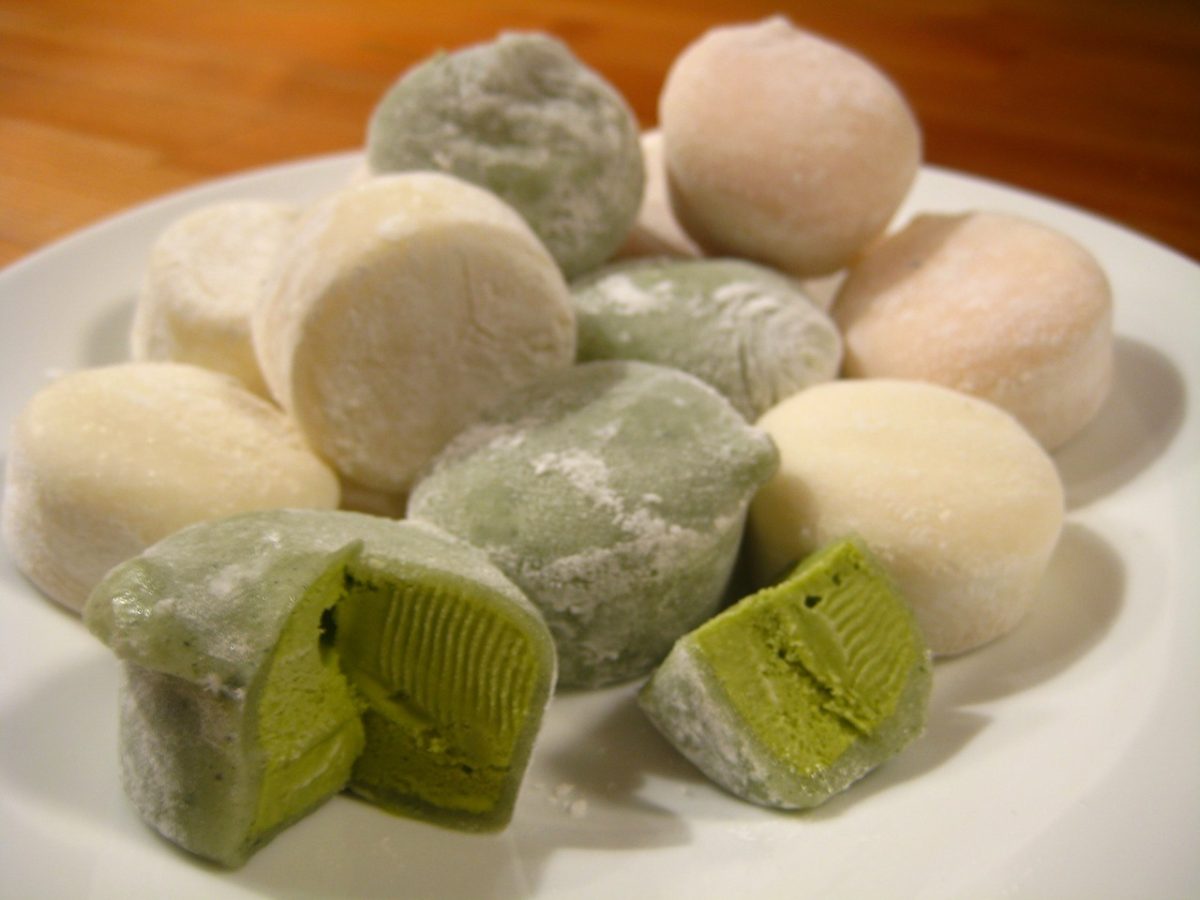
© Photo by skeeze on Pixabay
What is it? Sweet Rice Cakes
Mochi is a round Japanese sweet rice cake that sometimes looks similar to dango. Instead of using rice flour, the preparation of mochi requires the use of rice pounded into a paste during a special ceremony. Mochi is traditionally a treat prepared and eaten during the Japanese New Year. But now you can enjoy them all year round!
Kare
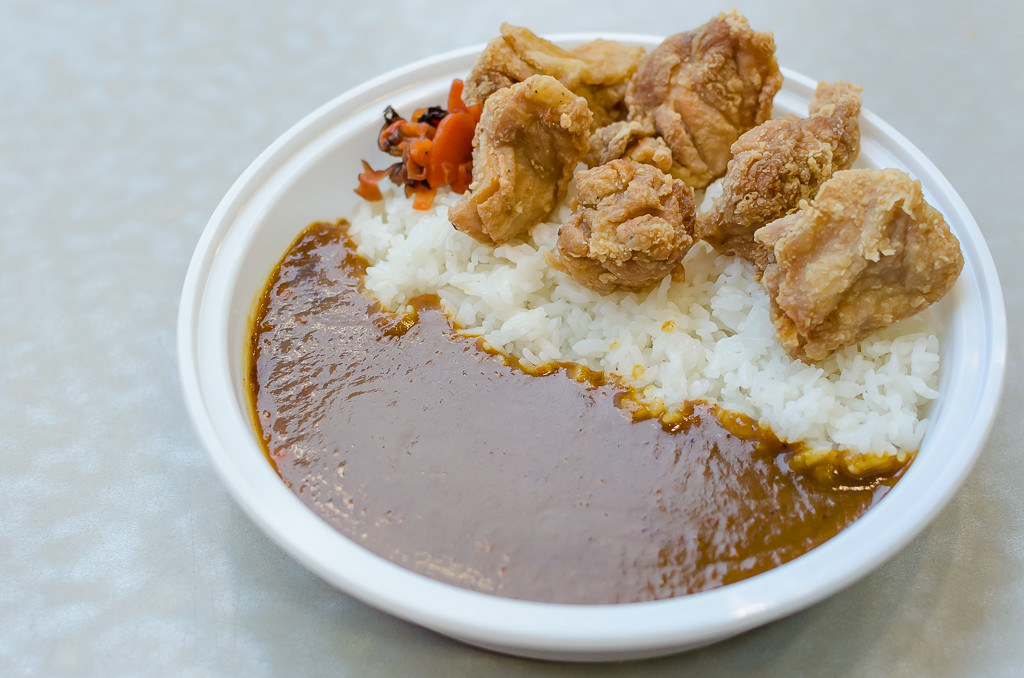
© Photo by qasic on Flickr
What is it? Japanese Curry
Yes, the Japanese have their own curry and it’s actually one of the most popular Japanese food among the locals. It was actually brought to Japan from India by the British and it stayed for good!
The list of its varieties is long but among the most common ingredients are vegetables, such as carrots, potatoes and onions and different kinds of meat, from chicken to beef. What’s interesting is that the Japanese curry is sometimes served over udon noodles or inside a pastry instead of being accompanied with rice.
Did you know that…
-
In 2013, UNESCO recognised the uniqueness of the Japanese culinary tradition, inscribing it on the list of Intangible Cultural Heritage. Japanese food is especially valued for its use of locally sourced ingredients and the observance of social and cultural traditions.
-
Tokyo is the number one most Michelin-starred city in the world! There are more than 200 Michelin star restaurants in Japan’s capital and 13 of them got 3 stars.
-
Tabelog is a Japanese website listing over 800 thousand restaurants in the whole country – a perfect tool to help you plan your meals during the trip to Japan!
Come on, plan a trip to Tokyo or Osaka to have some authentic Japanese food in this list! Leave a comment to tell us your favourite dish!

